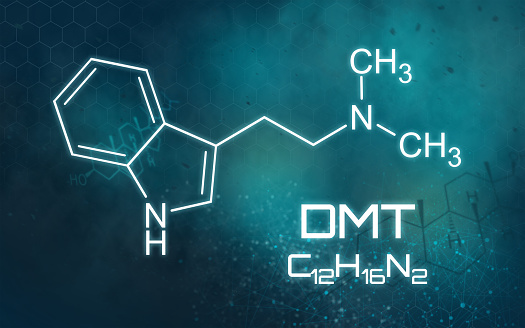Many people are familiar with the idea that breath work releases endorphins and serotonin into the body. But what about the famous psychedelic molecule – dimethyltryptamine (DMT)? Is there some way that breathing techniques could release DMT into the bloodstream? And if so, how does that happen?
What is DMT meditation?
Meditation is defined as the process of intentionally focusing one’s awareness on some object, activity, or sensation. This can occur while sitting quietly, walking slowly, chanting mantras, listening to music, or engaging in another type of exercise such as yoga. In contrast, psychedelic drugs such as LSD and psilocybin mushrooms produce similar effects without requiring intentional effort. These substances cause changes in sensory perception, mood, thought processes, and feelings of selfhood. They are associated with altered states of consciousness characterized by vivid imagery, increased emotional intensity, mystical experiences, enhanced creativity, and profound insights into human nature (Watts, 1978).
While it is clear that meditation and psychedelics affect brain function differently, researchers have found that both types of practice induce neuroplasticity (i.e., structural and functional reorganization of the nervous system), resulting in improved mental health and well-being (Lutz et al., 2008).
How to produce DMT through meditation?
The human body produces dimethyltryptamine (DMT), a psychedelic compound similar to LSD, according to a recent study published in the scientific journal Scientific Reports. This finding contradicts what most people think about DMT production, namely that it takes place solely in the pineal gland.
In fact, the researchers behind the study discovered that DMT is actually produced in several different areas of the brain including the amygdala, hypothalamus, hippocampus, thalamus, and cerebral cortex. Furthermore, the scientists found that the levels of DMT vary depending on where you look in the brain. For example, the highest concentrations of DMT were found in the amygdala, whereas the lowest levels were detected in the cerebellum. These findings suggest that DMT plays a role in regulating emotions and behavior. Try our a DMT meditation technique and see the miracle for yourself!
What is DMT breathwork?
Because Breathwork experiences and benefits often mirror those of DMT and similar psychedelics such as psilocybin mushrooms, ayahuasca, and peyote, and because DMT is produced naturally within the brain, some people assume DMT must be released during Breathwork. Some researchers are even trying to recreate the experience of DMT by administering synthetic versions of the compound directly into the bloodstream.
However, there is no evidence that DMT is actually released during Breathwork. Instead, it seems likely that the process of breathwork itself triggers the release of endogenous DMT.
In fact, studies have shown that highly stressful situations can trigger the release of large amounts of DMT in the rat brain, and this phenomenon may happen similarly in humans.
Furthermore, Breathwork sessions change the ratios of carbon dioxide (CO2) and oxygen in the blood and increase pH, and both of these rapid changes may put mild stress on the system, which might explain why DMT is sometimes released during Breathwork. In addition, Breathwork sessions induce a mildly hypoxic environment, which may also prompt the release of DMT due to the neuroprotective effects of DMT under conditions of low oxygenation.
How to release DMT with breathing?
The practice of DMT breathing is gaining popularity among people interested in alternative health practices. Breathing techniques to release DMT are being used to heal illnesses such as asthma, cancer, heart disease, depression, anxiety, PTSD, addictions, and more. Some people even use breathing exercises to help them sleep better.
In addition to helping us relax, breathing deeply is one way we release stress and tension. This is because our brains release chemicals called endorphins when we inhale, and those same chemicals are produced when we exhale. These endorphins are known as the “spirit molecule” or “the psychedelic molecule.” They are what make ayahuasca, peyote, psilocybin mushrooms, LSD, and other psychedelics produce their effects.
When we breathe deeply, we activate certain parts of the brain that control our autonomic nervous system, which regulates things like heart rate, digestion, and metabolism. The parasympathetic branch of the autonomic nervous system controls relaxation, while the sympathetic branch controls arousal. When we breathe deeply, we stimulate the vagus nerve, which connects the brain with the rest of the body.

DMT breathwork benefits
The practice of DMT trip breathing dates back thousands of years. Ancient cultures used it to calm themselves down, relax, and even meditate. Nowadays, people use it to reduce stress, anxiety, grief and anger, boost immunity, develop or increase self-awareness, enrich creativity, and enhance joy and happiness.
In fact, there are hundreds of studies proving the beneficial effects of deep breathing. A study published in the Journal of Psychosomatic Research found that meditation helps relieve pain, while another study showed that exercise combined with deep breathing can help treat chronic fatigue syndrome.
All the answers are already within you
In closing, I want to remind you of something very important that you can learn through DMT breathwork or any other modality. You already have everything you need inside of yourself. There is no “you”. There is no “me.” There is just life. And there is nothing outside of life. So whatever you’re looking for, wherever you think you might go, whatever you believe in, whatever you hope for – it’s already within you. All you have to do is open up to it. You don’t need anything else.

